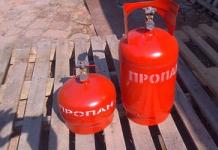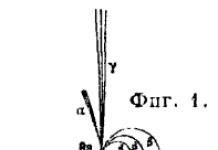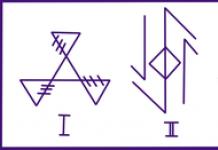We will send the material to you by e-mail
Repairs in older apartments often require a complete replacement of all heating radiators. Cast iron monsters of the Soviet period cannot last forever, and their efficiency leaves much to be desired. A logical question arises: which heating radiators are best for an apartment? The price of the product is not the only selection criterion. Here it is important to think through everything to the smallest detail - from the aesthetic component to practicality and economy.
The choice of heater determines the comfortable temperature in the house
Which heating radiators are better to install in an apartment: types, disadvantages and disadvantages
Heating devices are made of various materials, each of them reacts differently to pressure and temperature. So, types of heating batteries in an apartment:
Convector batteries made of steel
These are panels and between which metal plates are installed. The coolant circulates in the panels. It is believed that these devices have the highest heat transfer.
Such devices are very popular among owners of country houses. Steel heaters are produced in the Czech Republic, Italy, and Finland. They differ in the number of sections and metal ribs
The positive aspects of steel radiators:
- good heat dissipation;
- low energy intensity;
- low inertia;
- environmental friendliness;
- reasonable price.
Disadvantages of steel batteries:
- tendency to rust;
- instability to water hammer.
It is the last minus that is a significant obstacle to installing a steel heater in a multi-story building. When deciding which heating radiators are best for an apartment, steel heaters should be considered last.
Cast iron batteries
These products are considered the cheapest and most durable.

Cast iron casting in modern or retro style is produced in England, France and Turkey.These radiators can withstand up to twelve bar pressure and coolant temperatures up to one hundred and ten degrees. Thus, they are not afraid of water hammer and boiling water in the heating system.
Advantages of cast iron heating systems:
- half a century of service life;
- resistance to temperature and pressure of central heating systems
- long-term heat conservation, slow cooling.
Flaws:
- heavy weight, which requires particularly strong fasteners;
- long warm-up period;
- a large amount of coolant used;
- fragility.
Aluminum heaters
When solving the problem “How to choose heating radiators for an apartment with central heating,” unfortunately, products made of light and durable aluminum should be excluded from the list. These batteries have the best thermal conductivity and attractive exterior. But they are completely unsuitable for use in a centralized heating system due to their instability to water hammer.
Aluminum heaters come in lithium and extrusion versions and can withstand pressures of only 16 bar.

Therefore, if the apartment is equipped with its own boiler, it is difficult to find better radiators than these.
Advantages:
Disadvantages of aluminum heaters:
- short service life - up to fifteen years;
- weak convection;
- chemical instability of the material;
- inability to withstand water hammer.
Bimetallic products
At first glance, these batteries are very similar to aluminum ones. Their body is made of this light metal, and the interior consists of steel elements.

Bimetallic heaters are produced in Russia and Italy.On sale you can find pseudo-bimetallic products, additionally reinforced with steel verticals. They are less resistant to corrosion, but have increased heat transfer.
Advantages of bimetallic products:
- high heat transfer;
- resistance to water hammer;
- ease of installation;
- aesthetics.
Minuses:
- high price.

Which radiators are better: aluminum or bimetallic?
There can only be one answer to this question: of course, bimetallic heaters are the best choice. They not only combine all the advantages of aluminum and steel products. These batteries are characterized by increased strength and resistance to water hammer, which often threatens central heating systems and is the main cause of numerous accidents in heating networks.
Helpful information! Bimetallic devices can withstand pressure up to twenty atmospheres!

Selection and calculation
So, how to choose heating batteries (radiators) for an apartment in an apartment building:
- Devices must maintain a pressure of at least 15 atmospheres.
- Heaters must withstand water hammer.
- The design of the device must be resistant to corrosion and chemical attack.
- The heat transfer performance of the device should be studied.

The aesthetics of the device is not the last selection criterion
- Batteries may not last forever, but the longer they last, the better.
How to calculate the number of radiators
To calculate, you need to measure the area of the room. This is a problem for a third grader: you need to multiply the width by the length. For example, a standard room 3x5 m = 15 sq. meters of area.
To heat an apartment located in central Russia, an average of 41 W of thermal energy per square meter is required. Multiply 15 by 41 and we get 615 W. For our own peace of mind, let's round the figure to 650.
Each modern battery has technical documentation indicating its thermal power. All that remains is to select the required number of sections. The proposed calculation option is very conditional and does not take into account the characteristics of a particular apartment. Therefore, we suggest using the calculator below.

What are the best heating radiators for an apartment: price of products and manufacturers
Despite the fact that the choice of heating devices on the domestic market is very wide, there are undoubted leaders among manufacturers who have earned an impeccable reputation:
- Smart (China);
- Kermi (Germany);
- Purmo (Finland);
- Rifar (Russia);
- Royal (Italy);
- Global (Italy).

To solve the problem of which heating radiators are best for an apartment, the price of the product is not decisive, but remains an important factor. Below are the most popular battery models.
Table 1. Overview of popular radiator models
| Image | Model | Material | Mounting type | Heat dissipation, W | Average price, rub. |
|---|---|---|---|---|---|
 | Monolit 500 Rifar | bimetallic | wall | 1960 | 6890 |
 | STYLE 500 PLUS Global | bimetallic | wall | 1140 | 6991 |
 | RS 500 Bimetal Sira | bimetallic | wall | 2010 | 8450 |
 | Thermo 500 Revolution Royal | aluminum | wall | 1448 | 3704 |
 | Alum 500 Rifar | aluminum | wall | 1464 | 3840 |
 | RAP Thermal 500 | aluminum | wall | 1288 | 3120 |
 | 22,500 FTV(FKV) Kermi | steel | wall | 1930 | 5332 |
 | 22 500 Compact Purmo | steel | wall | 1470 | 4119 |
 | 2180 Arbonia | steel | wall | 780 | 8132 |
 | 500 STI Nova | cast iron | wall | 1200 | 6470 |
Every owner wants his apartment to be warm, cozy and comfortable. Among the many offers, we often begin to doubt and get lost in choosing, so we will tell you about which heating batteries are best for an apartment in this publication.
If you go to the store and start studying the assortment of heating radiators, even a whole day will not be enough, because the models differ not only in the number of sections and dimensions, but also:
- connection type and installation depth;
- quantity and quality of water contained in the device;
- thermal power;
- quality of decorative coating.
It is also worth considering the country in which the radiators are manufactured. This, as well as brand recognition, often influences the cost of products. For an apartment, it is important to choose the highest quality model with the longest possible service life, without overpaying just for the brand name.
On a note! Heating devices are manufactured in accordance with GOST 31311-2005. Cast iron radiators are subject to standard number 8690 from 1994.
Prices for cast iron radiators can vary greatly. New elite-class and designer products are much more expensive than classic models.
When choosing such a device, you should consider:
- heavy weight of both floor and hanging products;
- complexity of installation. It will be difficult or impossible to cope alone;
- the need to tighten connections before installation;
- the need to install a multi-section radiator, since the room is heated mainly by radiation, and convection accounts for no more than 25%;
- impossibility of hidden installation of radiators and pipelines;
- difficulty in cleaning and painting.
Advice! In order for the radiator to work properly and at full capacity, it must be repaired every few years. The sediment from the coolant settling in the sections reduces the heat transfer level of the device.
The best floor-mounted sectional cast iron radiators for an apartment.
Model Heat dissipation Center distance, mm Maximum operating temperature, °C Weight of one section, kg Estimated cost of one section (as of 2019), rub. ΔT = 60°C heat transfer 120 W. 300 110 9,44 8 / 10,5 From 8 662 ΔT =60°С heat transfer 118 W. ΔT =70°C heat transfer 144 W.
400 110 8,2 10 / 15 From 4 260 ΔT =60°C heat transfer 163 W. 500 110 11 8 / 15 From 3 520 Important! Don’t forget to consider the type and diameter of the connection when choosing a radiator for your apartment.
The best wall-mounted sectional cast iron radiators for an apartment.
Model Heat dissipation Center distance and dimensions, mm Connection type Weight of one section, kg Working and testing pressure, bar Estimated cost (as of 2019), rub. ΔT =70°C heat transfer 87.5 W. 500 Lateral 4,9 12 / 18 7 sections from 7 378 ΔT =60°C heat transfer 53.9 W. 500 Bottom side 4 18 / 27 1 section from 1,497 ΔT =60°C heat transfer 146.9 W. 500 Lateral 5,5 10 / 15 1 section from 2 360 Do not know, how to change the heating battery in an apartment? Start by studying the theory to avoid mistakes during installation. Check out. Do not forget that replacement of radiators during the heating season is carried out only after obtaining the appropriate permission.
Steel
Steel heating radiators are not the best option for installation in an apartment because:
- react negatively to coolant drainage;
- have a small operating pressure - up to 6 atmospheres;
- vulnerable to water hammer;
- incompatible with some polypropylene pipes.
Despite significant shortcomings, steel radiators are presented in a large assortment with a good price-quality ratio. Such devices can be equipped with a thermostat, hidden installation is possible.
Steel heating radiators are best installed in high-rise buildings with autonomous heating or private houses.
Aluminum
Radiators of convective-radiation type, designed for operating pressure up to 9 atmospheres. They quickly warm up rooms and can be equipped with a thermostat. Such heating batteries are much lighter than cast iron ones, but at the same time they have high heat transfer.
However, these advantages are offset by one significant drawback. Aluminum radiators are too sensitive to the chemical composition of water. And in city apartments it is very difficult to control the quality of the coolant.
In addition, aluminum is a soft metal; pressure drops in the system (water hammer), which often occur in multi-story buildings, significantly reduce the service life of the device and lead to breakdowns.
It is better to install aluminum radiators in private homes, provided that non-freezing liquid is not used as the coolant, and the system will provide for automatic air release (or a gas/air release valve must be installed on each radiator).
Combination of metals
Namely, a combination of steel or copper pipes inside and aluminum panels outside. Such radiators are called bimetallic. Products made of steel and aluminum are lightweight, durable, highly efficient, and operate for more than 20 years without maintenance.
Bimetallic radiators are produced by the companies Santekhprom (Russia), Royal Thermo (Russia) and Global (Italy).
Which bimetallic radiators are best for an apartment?
You can always choose an option to suit your taste, color, budget, and we offer a table to familiarize yourself with the characteristics of popular models.
Brand Model Section weight, kg 115 185 2,3 110 185 2,2 110 171 1,85 110 171 1,87 110 188 1,94 In addition, the Profi Bm 500 model from the Russian brand Rommer has received a lot of positive reviews.
The radiator manifold is completely steel. The design was developed by leading Russian engineers in accordance with GOST. The sections have a safety design without sharp corners or edges. The decorative coating is applied in two stages (cataphoresis method). Each section weighs one and a half kilograms and holds 180 ml of water. The heat transfer of one section at ∆T = 70°C is 143.3 W. And the price of one section is less than five hundred rubles.
It is worth paying attention to another Russian brand - Halsen. The company produces sectional radiators using injection molding and provides a twenty-year warranty on its products. Model BS 500 with ten sections weighs only 17 kg, product dimensions are 80 x 96 x 56.8 cm. The thermal power of one section is 183 W. The device is compatible with plastic, steel and copper pipes, is resistant to water hammer, and the tightness is not compromised upon contact with aggressive liquids. All Halsen products comply with GOST 31311-2005.
There are also semi-bimetallic radiators. That is, only the “core” pipes are made of steel. All other radiator elements are aluminum. Due to this combination, heat transfer is slightly improved (compared to the previous option) and the price is reduced.
Semi-metallic radiators are produced under the brands Rifar (Russia), Gordi (China), Sira (Italy).
Brand Model Maximum coolant temperature, °C Heat transfer at ∆T = 70°C, W Section weight, kg Rifar 135 138 / 196 1,45 /2,1 Gordi 135 170 1,9 Sira 110 145 / 201 1,48 / 1,92 Radiators made of aluminum and steel can be sectional or solid.
The characteristics of bimetallic radiators made of steel and aluminum must be within the following limits:
- heat transfer 170-190 W at ΔT =70°C;
- working pressure of at least 16 atmospheres. In a centralized heating system, a pressure of about 10 atmospheres is maintained. With a sharp increase in pressure, the radiator should not burst;
- center distance 200, 300, 350, 500 or 800 mm. This parameter is selected according to the existing heating pipe layout in the apartment;
- The maximum withstand temperature is 90°C. Typically, the coolant temperature in apartment buildings is 5-10°C lower than this indicator.
Video - How to choose a bimetallic radiator?
Electric radiators
They are usually not used in apartments as the main source of heat, except for short periods of the year, when the radiators are already or still cold, and outside the window the thermometer suddenly quickly crept down. To avoid wrapping yourself in 5 blankets and going to bed with the oven open (this is very, very unsafe!), you just need to plug in an oil radiator or convector.
Oil heaters
- Installation type: floor only.
- The number of instrument sections is from 3 to 14.
- Radiator power up to 3000 W.
- The height of radiators is usually in the range of 50-80 cm, width up to half a meter.
- Oil radiators weigh a lot - up to 30 kg. It is better not to purchase models that are too light.
- Additional options: fan, humidifier, heated towel rail, tilt sensor, automatic switch-on function and room frost protection.
Calculator for calculating the number of sections for a heating radiator
Radiator
One of the most important indoor equipment that creates warmth and comfort in any home.
The radiator selection process consists of two stages:
- Selecting the type of device itself.
- Calculation of thermal power and number of radiator links.
When choosing a radiator, experts advise paying attention, first of all, to the material of the sections, since it is this that affects the heat transfer of the future battery, its weight and durability.
1 Types of radiators
Advantages:
- high heat transfer
- large flow area of intercollector tubes
- high working pressure 10-16 atmospheres
- elegant design
- light section weight
- optimal price
- Possible corrosion in heating systems where ethylene glycol-based media is used as a coolant.
- There is a need to remove air from the upper manifold using a bleed valve.
- The least durable part of aluminum radiators is the threaded connections of the sections (compared to steel ones).
Advantages:
- high heat transfer,
- resistance to low quality coolant,
- high working pressure (from 20 atmospheres),
- durability (service life - up to 20 years),
- small volume of coolant in the section,
- elegant design.
- Also, these radiators of the Monolith series can be used in steam heating systems.
- high price (15–20% more expensive than aluminum radiators),
- smaller flow area than aluminum radiators,
- the hydraulic resistance of bimetallic radiators is greater than that of steel ones, therefore, in heating systems where this type of radiator is installed, more energy is required to pump the coolant
Experts advise their use where additional reliability is required - in apartment buildings and multi-story office buildings. In private houses and cottages, such radiators are used less frequently; due to the low pressure in closed heating systems (up to 2 atmospheres), their use may not be advisable.
Advantages:
- high heat transfer
- elegant design
- relatively budget heating option
- low operating pressure (from 6 to 8.7 atmospheres)
- rusts when draining coolant
- does not withstand pressure during hydraulic tests
- reacts poorly to oxygen entering through the pipe system
IMPORTANT! If the quality of the coolant is low, or its effect on aluminum is unknown, then it is better to use either bimetallic or steel radiators.
Advantages:
- high thermal inertia (retains heat for a long time)
- high wear resistance
- durability (service life - about 50 years)
- operating pressure (10 - 15 atmospheres)
- ease of use
- low cost
- long heating
- do not allow rapid changes in temperature and heating intensity
- large radiator mass
- low heat transfer
- need for painting
- They do not have convection, they give off heat only around themselves, due to this the room warms up more slowly and unevenly.
IMPORTANT! The final decision in favor of one type of radiator or another should be made based on the main characteristics of the heating system for which the heating device is intended.
- central or individual heating supply to the house;
- working and test pressure in the heating system;
- type of heat supply system - single-pipe or two-pipe;
- maximum temperature and PH of the coolant.
2 Calculation of thermal power and number of radiators
Having decided on the type of radiator, you need to pay attention to the thermal power, the value of which depends on the specific room.
The amount of power consumed depends on a number of indicators:
- room size;
- number of external walls of the room and windows;
- type of house (brick, panel);
- type of window (wooden, plastic).

Calculation of heat transfer is given for a room with a standard ceiling height of up to 3 meters and window sizes of up to 1.5 by 1.8 m.
In general, for ease of calculation, if the room is well insulated, you can take one radiator section per 1.5-2 square meters. m. area of the room.
Thermal power for all types of radiators is different:
cast iron radiator - 80–150 W (for one section);
steel radiator - 450-5700 W (for the entire radiator);
aluminum radiator - 190 W (for one section);
bimetallic radiator - 200 W (for one section).
The power of the radiator, sectional or solid, is indicated in the technical specifications provided by the manufacturer. The optimal temperature of the coolant, water, under such conditions should be 70°C.
IMPORTANT! Whatever the choice of radiator, according to experts, special attention should be paid to the two most important points: the features of the heating system and trusted manufacturers, the quality of whose equipment will not cast doubt.
3 Complex purchase
Consumables: ball valves, tees, jumpers (bypass), pipes for extension, brackets, plugs, fittings.
Sealants: silicone, linen or thread.
Paint and varnish materials: primer, paint for metal surfaces, patina.
Fastening tools: anchor bolts, dowels, union nuts.
In this article we will look at what types of heating radiators there are for an apartment. How to choose a device? What technical parameters should I rely on? Let's figure out which heating radiators are best for a country house. Let's find out the differences between aluminum, bimetallic, cast iron and steel heating radiators, which ones best suit individual requirements?
NEED TO KNOW! The choice depends on the coolant components. In DSPs, the coolant is often of low quality. When in contact with liquid, aluminum is corrosive, so it is not suitable for an apartment building.
About the features of centralized and autonomous heating systems. What should you pay attention to?
Residents of multi-storey apartments and private houses (dachas, cottages) use different heating systems (OS). Each has features, advantages, and disadvantages. Keep in mind: each OS needs to select heatsinks differently. An unsuccessful purchase of equipment will lead to low heat transfer, short service life, and rapid damage.

Water hammer(hydraulic hammer) - a sharp surge in pressure in a water-filled system. The reason for this is a rapid change in the speed of water flow. Consequences of water hammer: the appearance of longitudinal cracks in the pipeline.
Depending on whether you live in an apartment building or a private one, heating can be:
- Central (DSP). Heat is supplied to several buildings and apartments from a single source (boiler room). The pipeline distributes the coolant, supplying it to consumers. After heat is removed, the carrier returns to the source (heat generator).
- Autonomous system useful when serving residents of a private home. It is also used in cottages and dachas: they are not connected to the DSP. To heat the coolant, a boiler or boiler is installed. Next is the control unit, piping system, batteries. The advantage of autonomous control is the setting function based on needs: adjusting the heating temperature, automatically maintaining the specified settings. Disadvantage: high price of battery, installation work, difficult maintenance.
What types of batteries are there for an apartment or private house?
Material is the main criterion by which equipment is selected. Affects heat transfer, pressure, cost, service life, strength, reliability.

According to the material:
- Bimetal. Undemanding to coolant, designed for long-term use. Expensive.
- Cast iron. The residual heat retention rate is 30% (for other varieties - 15%). Slowly heat up, slowly lose temperature. Reliable, resistant to corrosion.
- Aluminum. They heat up quickly and lose temperature quickly. Useful in autonomous systems. Characterized by high thermal power and reasonable price.
- Steel. They are compact, have good heat transfer, are durable, and are slightly oxidized by low-quality coolant.

By installation type:
- Wall-mounted. The most common radiators in apartments, cottages, dachas, and private houses. Wall mounted.
- Skirting. They are mounted in metal boxes, taking up space instead of a standard baseboard. They take up almost no room space. They are inconspicuous and will not stand out from the decor of the room.
- In-floor. Water convectors save space: they are built below floor level.

Heating radiators – which ones are best for an apartment?
When choosing a battery for installation in an apartment, pay attention to main technical parameters:
- Heat dissipation characterizes how efficiently the device copes with heating the room. When selecting, take into account heat loss (they are affected by the thickness of the walls, the size of window and door openings), and the volume of the room. In sectional models, the power is indicated per section. Calculating the number of fins will accurately determine the required level of heat transfer. The thermal power of one section is on average 0.15–0.2 kW.
- Operating pressure It is important that the equipment can work in your system. The pressure depends on the material. Incorrectly selected pressure will cause damage due to water hammer.
- Material or coating that can protect against wear and leaks. Thick walls and primers extend service life. The ability to connect a battery to work with aggressive coolant will expand the scope of operation.
- Design heating equipment. Consider how the heating equipment will fit into its surroundings. Due to the choice of models, the device can be selected to suit different design styles and colors.
- Weight It’s worth considering immediately before purchasing: whether you can transport the unit to your home, fix it on the wall, and connect it without causing damage. The most massive cast iron batteries, lighter aluminum (weight of one segment - up to 2 kg), steel (about 2.5 kg).

Options for choosing radiators for a country house
Unlike the central heating system of apartment buildings, the autonomous heating system of private homes is much less demanding on pressure. Due to this, it becomes possible to purchase equipment designed for low pressure. Models with thin walls are suitable: for example, aluminum.
NEED TO KNOW! Inexperienced cottage owners are faced with freezing of liquid in pipes. This leads to the appearance of chips on the body: it bursts. To avoid this, drain the water.
Due to the smaller distance between the heat source and the battery, heat loss in autonomous heating systems is small. Equipment in a private home must be adapted to high-temperature coolants.
Cast iron heating radiators – which are better? Advantages and disadvantages
Cast iron is a strong, reliable material, heavy and durable. Cast iron heating equipment is used in apartments, private houses, cottages, and dachas. The material requires a long time to heat up, which will cause discomfort at the beginning of the heating season. But this works in the opposite direction - when disconnected, the batteries remain warm for some time.
Advantages of cast iron models:
- Long cooling time. The thick body retains heat - the heating season will end later than its neighbors.
- Reliability and durability. In old houses there are cast iron batteries that are 50 or more years old.
- Resistant to corrosion. The material is undemanding in terms of quality and type of coolant.

Flaws:
- Heavy weight. Difficult to deliver and install.
- The price is higher than that of steel and aluminum.
- Long heating time. It will take time to warm up.
Bimetallic heating radiators – which ones are better? Advantages and disadvantages
The peculiarity of bimetal devices is that they consist of two materials. Aluminum shell, steel core. Strong, durable. They are resistant to corrosion and water hammer, easy to install, and have high heat transfer. Due to the relatively high price and ability to withstand high pressure, they are installed in apartment buildings. Which bimetallic heating radiators are best for an apartment - brands Halsen, Radena, Bilit.

Advantages of bimetallic equipment:
- High resistance to corrosion: steel components protect against harmful influences.
- High heat transfer due to the aluminum surface. Aluminum is characterized by rapid heating.
- Long service life. On average, bimetallic devices last 25 years.
Flaw one is the high price compared to aluminum, steel, and cast iron.
Aluminum heating radiators – which are better? Advantages and disadvantages
Suitable for private houses, cottages with autonomous operating system: not designed for high pressure due to the fragility of aluminum. They are inexpensive. They heat up quickly and cool down just as quickly. The service life is about 15 years.

Which radiators are better: aluminum or bimetallic?
Aluminum appliances characterized by a low price. Suitable for installation in private houses, cottages, dachas. With high thermal power, prices are relatively low (if you look at Russian manufacturers - Halsen, Royal Thermo, Radena), the design will fit into the environment.
The advantages of aluminum models include a relatively low price (there are expensive options and analogues on the market for those who want to save money), and a high heat transfer rate. Disadvantages: demanding on the acidity of the liquid (possible destruction of the walls due to the susceptibility of the material).
Bimetallic batteries made of two materials: steel on the inside, aluminum on the outside. Designed for a service life of approximately 40 years, reliable, expensive compared to other varieties. Unpretentious (no special requirements for water). The inside and outside are coated with a primer to prevent corrosion.

Bimetallic ones are suitable when a durable unit is required. The only drawback is that the price will not suit everyone.
Sectional or steel – which is better?
Sectional heating batteries are installed in several blocks: they are connected into a single structure. This is convenient and practical: it will allow you to control the efficiency of heating the room. Difficult to install: leaks are possible due to improper connection. Install such heating equipment in private homes with an autonomous operating system. This is safe because sectional models are less protected from water hammer.

Dimensions steel (panel) units are known in advance (check the technical specifications or contact the seller). When choosing, focus on the parameters of the apartment or private house (volume of free space, length and depth of niches). The price of panel units is higher. The pipes of most models have a primer that prevents corrosion from low-quality coolant. The coating increases the service life. Installed in apartment buildings (riser system).
I like (2)










































